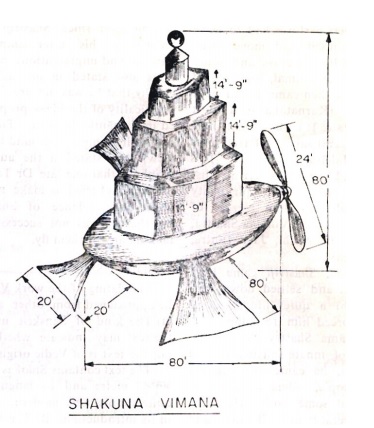Jan 06 2015
Ancient Indian Airplanes
 Being an activist skeptic means being reminded, almost on a daily basis, that there is no idea so absurd that there will not be those who fervently believe it.
Being an activist skeptic means being reminded, almost on a daily basis, that there is no idea so absurd that there will not be those who fervently believe it.
At the most recent meeting of the Indian Science Congress Association, Captain Anand J Bodas, apparently under the aegis of Mumbai University, gave a lecture in which he claimed that airplanes existed in India 7,000 years ago, that they were able to fly to different continents, and even to different planets.
These claims are obvious nonsense (although I will link to resources which painstakingly demonstrate this). What is more interesting is that such a talk was able to infiltrate what is apparently a science conference. This is a disturbing phenomenon, all too common, in which rank pseudoscience is able to work its way into the domain of respected science.
Universities, conferences, TED talks, journals, and scientific organizations have a responsibility, in my opinion, to maintain minimum standards for any material they present. Sometimes they try to evade responsibility by claiming that allowing the use of their venue or medium is not an endorsement, but that is patently not true. The public perceives it as such, the pseudoscientists exploit it as an endorsement, and therefore it is, de facto, an endorsement.
Given the proliferation of information (which is a good thing) it is all the more important for professional organizations and institutions to provide a guide to the public as to which sources are legitimate and reliable. The cranks want to blur the lines because they want the imprimatur of legitimacy.
There is another element here and that is cultural or nationalistic pride. This is also a common phenomenon – scientists engaging in pseudoscience in order to bolster the esteem of their culture, by claiming ancient origins, historical accomplishments, or the legitimacy of their cultural beliefs. Perhaps this motivation causes scientists to be more tolerant of dubious methods than they otherwise would be. Of course, the potential conflict of interest should motivate them to be more skeptical, not less.
Let’s get to the ancient Indian planes. Fortunately I don’t have to spend too much time debunking the specifics of this claim, because scholars have already done so, back in 1974 – over 40 years ago. As an aside, this is an excellent example of why scholars at times need to pay attention to pseudoscience and debunk it. Their work can then serve as a resource when the pseudoscience claims pop up again, as they always seem to do.
The source of this particular myth comes from two books published in the 1950s in which the authors interpret ancient writings at face value while at the same time imaginatively interpreting the text. Many cultures imagined building machines that would fly like birds. Just because someone wrote about it doesn’t mean such devices existed.
As you can see from the image above, the described machines could never have flown. They are fanciful and lack any knowledge of aerodynamics, or any plausible mechanism for lift, propulsion, or control. There is no description in the text of the underlying knowledge that would be necessary to design and build such machines. They simply describe machines that could not possibly fly, lacking in sufficient detail, and what details they do give are contradictory and nonsensical.
If you are interested in the gory details, then read the original report linked to above.
The story here is that a bit of obvious pseudoscience, debunked 40 years ago, worked its way into a prestigious science conference, over the objections of some members. It is reported that:
An online petition by a scientist at the NASA research centre had demanded that the scheduled lecture be cancelled as it mixes mythology with science.
The purpose of the organization is to promote science in India. Allowing such nonsense into their conference has diluted that mission, and distracted from the conference.






